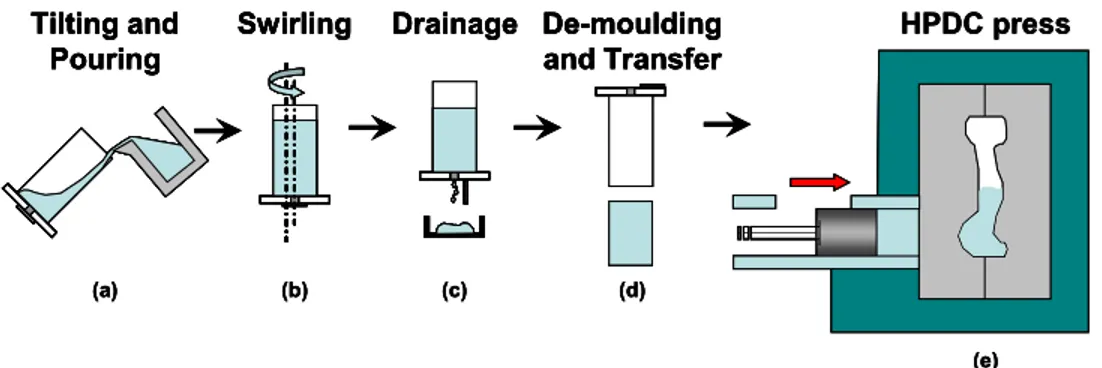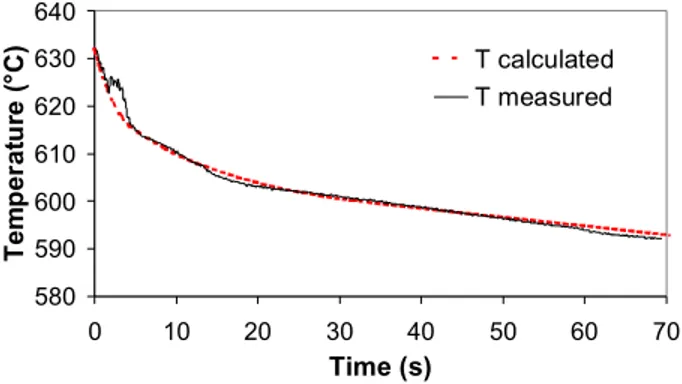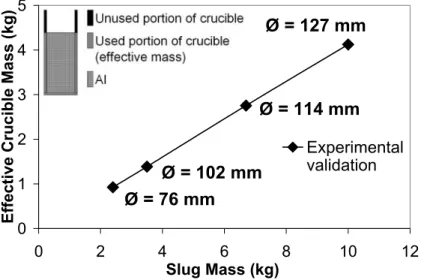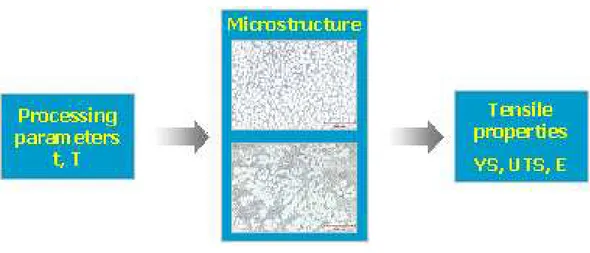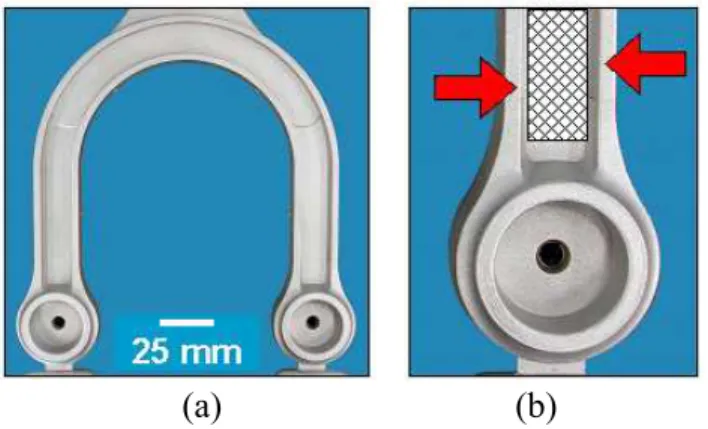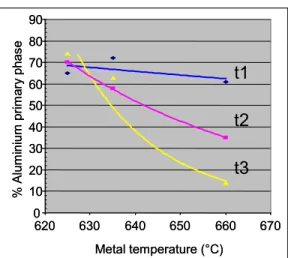Publisher’s version / Version de l'éditeur:
Vous avez des questions? Nous pouvons vous aider. Pour communiquer directement avec un auteur, consultez
la première page de la revue dans laquelle son article a été publié afin de trouver ses coordonnées. Si vous n’arrivez pas à les repérer, communiquez avec nous à PublicationsArchive-ArchivesPublications@nrc-cnrc.gc.ca.
Questions? Contact the NRC Publications Archive team at
PublicationsArchive-ArchivesPublications@nrc-cnrc.gc.ca. If you wish to email the authors directly, please see the first page of the publication for their contact information.
https://publications-cnrc.canada.ca/fra/droits
L’accès à ce site Web et l’utilisation de son contenu sont assujettis aux conditions présentées dans le site LISEZ CES CONDITIONS ATTENTIVEMENT AVANT D’UTILISER CE SITE WEB.
The 45th International Conference of Metallurgists COM 2006 [Proceedings], 2006-05
READ THESE TERMS AND CONDITIONS CAREFULLY BEFORE USING THIS WEBSITE.
https://nrc-publications.canada.ca/eng/copyright
NRC Publications Archive Record / Notice des Archives des publications du CNRC :
https://nrc-publications.canada.ca/eng/view/object/?id=ad67b3d9-1d20-4372-baed-e2123a48e9ac https://publications-cnrc.canada.ca/fra/voir/objet/?id=ad67b3d9-1d20-4372-baed-e2123a48e9ac
NRC Publications Archive
Archives des publications du CNRC
This publication could be one of several versions: author’s original, accepted manuscript or the publisher’s version. / La version de cette publication peut être l’une des suivantes : la version prépublication de l’auteur, la version acceptée du manuscrit ou la version de l’éditeur.
Access and use of this website and the material on it are subject to the Terms and Conditions set forth at Impact of Semi-Solid Process Parameters on the Microstructure, Morphology and Mechanical Properties of A356 Alloy
Impact of semi-solid process parameters on the microstructure,
morphology and mechanical properties of A356 alloy
Joseph Langlais, Alain Lemieux and Neivi Andrade Alcan International Ltd.
Arvida Research and Development Centre C.P. 1250, 1955 Boulevard Mellon
Jonquière, Québec, Canada G7S 4K8 Dominique Bouchard
National Research Council Canada Aluminium Technology Centre 501 University Boulevard
Chicoutimi, Québec, Canada G7H 8C3
ABSTRACT
A concerted effort between Alcan International Limited and the National Research Council of Canada (NRC) has been initiated to develop a liquid-based slurry-making process, dubbed SEED (Swirled Enthalpy Equilibration Device) for semi-solid forming. The technology is presently entering the industrial and commercial stages, and will be used by the first customers at the end of 2006. Semi-solid processing of aluminium alloys offers many advantages in fabricating economically near-net-shape parts of superior quality. The SEED process helps to overcome problems experienced with thixocasting and especially the high cost of feedstock. The SEED process involves two main steps: 1) heat extraction to achieve a desired liquid/solid mixture, and 2) drainage of an excess liquid to produce a self-supporting semi-solid slug that is formed under pressure. The heat transfer plays an important role (enthalpy equilibrium) during the manufacture of the solid slurry and its analysis is briefly described. The semi-solid material is obtained using different processing times and initial conditions. The impact on the solid fraction distribution and the morphological evolution of the microstructure is presented. The influence of the SEED processing parameters (slurry preparation) and the resulting mechanical properties for the alloy A356 are also reported.
INTRODUCTION
Over the last few years, lightweight materials and reliable processes have been used in transportation vehicles to help reduce fuel consumption. Rheoforming processes are more and more adopted by the casting industry due to their capabilities and also to overcome challenges faced when using thixocasting (1), mainly reducing the high costs associated with the semi-solid feedstock (2,3,4,5,6) and the full internal recycling of the scrap.
The Alcan semi-solid process, dubbed SEED (7), belongs to the rheocasting family. The SEED process is characterized for a short processing time and excellent globular microstructure. The process handles both foundry and wrought alloy compositions (8) such as 206, 356/357, 514 and AA6061, along with different slug dimensions and weights (up to 18 kg so far). The typical microstructure of the slug consists mainly of a globular primary aluminium phase (α-Al) uniformly distributed over the eutectic residual aluminium and silicon.
Figure 1 schematically describes the SEED process. The process involves two main steps: the heat extraction to achieve a desired liquid/solid mixture and the drainage of an excess eutectic liquid. The process starts when the liquid metal of a desired composition is poured into a metallic container. Consequently, the metal temperature rapidly falls due to the heat exchange between the crucible and the liquid. After pouring, the container and its content are swirled with an eccentric motion to disperse the nuclei formed on the container wall and to minimize the temperature gradient of the slurry. At this point, the solid fraction increases rapidly and then stabilizes as the crucible and the aluminium approach thermal equilibrium. During this step, the solid fraction will be approximately between 0.30 and 0.40. Before a valve is opened at the bottom to drain the excess liquid from the alloy, the container is held motionless for a few seconds. During drainage, there is an increase in the solid content of the slurry and no appreciable temperature change. After draining, the semi-solid slug is de-moulded and transferred to the HPDC press to form the desired part.
Tilting and Pouring Swirling De-moulding and Transfer Drainage (a) (b) (c) (d) HPDC press (e) Tilting and Pouring Swirling De-moulding and Transfer Drainage (a) (b) (c) (d) Tilting and Pouring Tilting and Pouring Swirling Swirling De-moulding and Transfer De-moulding and Transfer Drainage Drainage (a) (b) (c) (d) HPDC press (e) HPDC press (e)
The working principle of the SEED process is based on thermal equilibrium between the container and the liquid metal, as well as for the unique drainage of the excess eutectic liquid. Indeed, the SEED process could be depicted as a self nucleation and growth control process. The objective of this paper is to determine the effect of the total processing time (defined as the time from the pouring stage up to the de-moulding of the semi-solid slug) and the pouring temperature on the microstructure and tensile
properties of alloy A356. The morphology and distribution of the α-Al primary grain was
analyzed to identify the main governing parameters and optimum conditions for semi-solid applications. In addition, an overview of the heat transfer aspects is presented.
HEAT TRANFER
A mathematical model covering the phenomena encountered in the SEED process (i.e., conduction, convection, radiation and solidification) was built to determine the temperatures evolution of the slugs and crucibles. The SEED process is characterized by the equilibrium during the heat exchange involving the aluminium, the crucible and the ambient air. The general equation describing the overall heat transfer principles can be expressed as: f Al S Al conv rad crucible Cp dT q q dt m Cp dT f T m H m
∫
+∫
( + ) =∫
+ ( ) ∆ (1)In the SEED process, the crucible and the surrounding area absorb the heat
supplied by the aluminium. The latter depends on the enthalpy, ∆HAl, which varies
according to the temperature. In the SEED process, the eccentric motion of the crucible provides a transport of thermal energy by convection within the slurry. This effect was considered in the model by using effective thermal quantities (9, 10).
The ProCastTM software was used to simulate the temperature evolutions in the
process. Figure 2 is an example of the calculated and measured temperature evolutions of a slug. 580 590 600 610 620 630 640 0 10 20 30 40 50 60 70 Time (s) T e m p er at u re ( °C) T calculated T measured
It is seen that during the first 20 seconds the temperature drop is large and then becomes smaller as the slug is in a quasi-stationary regime. The average slug temperature is approximately 595°C after 60 seconds of residence in the crucible. According to the Scheil model, this corresponds to a solid fraction of 0.35 for the A356 alloy. The drainage of a portion of the enriched liquid after this time allows the value to increase as a function of the amount drained. A reduction in the slug temperature occurs during draining but is relatively small due to the quasi-stationary regime of the slug.
The numerical simulations of the heat transfer were used to predict the mass of the crucible required to extract the desired amount of heat from the aluminum. Most of the heat is absorbed by the crucible in direct contact with the aluminium and referred to as the effective mass in the context. The crucibles were made from plain carbon steel and filled to approximately 75% of their capacity.
Figure 3 shows the linear relationship between the effective mass of the crucible and the mass of the semi-solid slug. It is interesting to note that the linear relationship
also holds for a relatively large range of slug diameters (φ).
0 1 2 3 4 5 0 2 4 6 8 10 12 Slug Mass (kg) Effective Cruc ible Ma ss (kg) Experimental validation Ø = 114 mm Ø = 76 mm Ø = 102 mm Ø = 127 mm
Figure 3 - Effective Crucible Mass vs. Slug Mass (A356, fS: 0.5) (15)
EXPERIMENTAL
Based on the above findings, the SEED parameters were changed accordingly to study the impact of the pouring temperature (T), the swirling and drainage times (t) on the resulting microstructure, and the mechanical properties (Figure 4).
Figure 4 - Diagram of the Experimental Approach
The chemical composition limits of alloy A356 used are shown in Table I. The pouring temperature varied between 625 and 660°C and three total processing times were evaluated. The total processing time was increased by systematically changing the
duration of the swirling and draining, while the holding time remained the same (t1:
45-10-45, t2: 60-10-60, and t3: 75-10-75 for a total processing time of 100, 130, and 160
seconds, respectively).
Table I - Chemical Composition Limits of A356 alloy (wt %) - AA standard
Si Mg Mn Ti Fe Cu Zn Al
6.5-7.5 0.2-0.45 0.1 0.2 0.2 0.2 0.1 Bal.
The semi-solid slugs were processed in a Bühler SC N/ 53 high pressure die casting press (600 tons) using a prototype mould having a “U” shape die. Regardless of the SEED processing parameters, all parts kept the same shot profile. After removal from the die cavity, the cast parts were quenched in water. The final temperature of the semi-solid slugs was measured to ensure repeatability and minimize bias. All cast bars were x-rayed to confirm the part quality. The castings were then heat-treated to obtain a T5-temper condition (6 h at 170°C). Finally, tensile testing and image analyses were carried out in all samples to identify the change in the microstructure. The sampling locations are specified in Figure 5.
The morphology and distribution of the α-Al primary grain were analyzed to identify the main governing parameters and optimum conditions for semi-solid applications. The tensile test specimens (three samples for each condition) were flat pieces with 32 mm of gauge length and 6.4 x 4.5 mm of cross-section at the gauge.
(a) (b)
Figure 5 - Cast Part Shape (a) and Sampling Locations (b) for Metallographic Analyses (arrows) and Mechanical Properties (grid zone)
RESULTS AND DISCUSSION
Microstructures
Overall, three mechanisms take place: abundant nucleation of the primary phase on the metallic container wall, dispersion of the nuclei throughout the bulk during swirling of the liquid and restrained growth due to temperature uniformity. The resulting microstructures were mostly globular and small, even without the addition of grain refiner. During the semi-solid processing of alloy A356, the liquid phase fraction just above the eutectic temperature is 51% (11). During the cooling phase, all this liquid solidifies as eutectic and the final microstructure represents 49% of globular α-Al and 51% eutectic that contain 11.3% finely dispersed Si. To understand the evolution of the globular microstructure, some proposed mechanisms dealing with the fragmentation of larger dendritic structures when stirring mechanically or electro-magnetically (12). However, this does not fully explain the globular structure formation when the metal is not or smoothly stirred (SEED process).
Another mechanism (13) is based on the solute distribution in both solid and liquid phases, and on the curvature effect, such as the Gibbs-Thomson effect of a curved solid/liquid interface. Based on this theory, the microstructure evolution during the cooling in the semi-solid range can be derived from the critical radius related to the stability of the nuclei in the melt and the constitutional under-cooling affected by the cooling rate. A low cooling rate will promote a more uniform solute distribution ahead of the solid/liquid interface than a faster cooling rate. The lower cooling rate will lead to a lower constitutional under-cooling, increasing interface instability and spherical growth. The dendritic structure formation can be avoided by: providing a well distributed copious number of nuclei within the melt, and slow cooling by the container. The process time also influences the size and morphology of the α-Al primary globule. When the pouring
temperature increases, the globular shape of the primary α-Al phase will change gradually to a rosette-like type and then to a dendritic structure.
The effect of the pouring temperature on the microstructure is seen in Figure 6. The increase in the pouring temperature affects the overall morphology of the primary aluminium phase. Along with the micro-structural change, the nucleation and growth kinetics were affected and led to an overall reduction in the solid fraction.
The microstructural change is attributed to the influence of the higher temperature on the nucleation kinetics and the temperature gradient within the melt. A pouring temperature closer to the liquidus temperature will favour a larger number of nuclei forming on the container wall (heterogeneous nucleation) and within the bulk of the liquid. The nuclei formed will survive (12) because of the uniform temperature field in the melt (i.e., small temperature gradient) resulting in an increased nucleation rate. The swirling action in the SEED process disperses the nuclei throughout the melt and the growth is hindered in the near isothermal volume.
Figure 6 - Effect of Metal Pouring Temperature on the Microstructure of an Alloy A356 (16)
Consequently, the process favours small globular grain distribution throughout the entire volume, promoting the semi-solid homogeneity and thixotropic behaviour during die filling (14). The effect of the processing time on the microstructure using the same initial metal pouring temperature of 625°C is seen in Figure 7.
The morphology and the solid fraction were not significantly impacted by the increase in the total processing time. The resulting microstructure indicates that the pouring temperature is a dominant process parameter with regards to the nucleation and growth mechanism. Regardless of the change in some process parameters, the primary aluminium phase morphology and distributions were unaffected. These results indicate a degree of process robustness that is attractive for a typical industrial environment.
The effect of the processing time on the microstructure using the same initial metal pouring temperature of 635°C is seen in Figure 8.
Figure 7 - Effect of the Processing Time for a Pouring Temperature of 625°C (16)
When increasing the pouring temperature, the morphology of the primary aluminium phase slightly deviated from the globular shape. The metal pouring temperature was dominant over the other parameters. The solid fraction was slightly reduced when increasing the processing time. Because of the higher temperature gradient, the nucleation kinetics was reduced resulting in a less number of nuclei and the growth, which take place within a melt having a steeper temperature gradient. Consequently, the primary aluminium phase departs from the typical globular shape before processing of the semi-solid slug. It resulted in a cast microstructure having a globule-dendritic form surrounded by more eutectic liquid due to the lesser number of nucleation sites.
Figure 8 - Effect of the Processing Time for a Pouring Temperature of 635 °C (16)
The effect of the processing time on the microstructure using the same initial metal pouring temperature of 660°C is seen in Figure 9. The increase in processing time at that temperature drastically changed the morphology and the amount of the primary aluminium phase. The highest temperature highly impacted the nucleation kinetics and growth behaviour by hindering the nucleation rate promoting the change in the primary aluminium phase morphology from rosette-like to dendritic. The primary aluminium phase started to grow within a melt having a much steeper temperature gradient and resulted in nearly full dendritic morphology. Because the primary aluminium phase is surrounded by the Al/Si eutectic, the rheological characteristics of the slurry were impaired and consequently the filling behaviour.
Figure 9 - Effect of the Processing Time for a Pouring Temperature of 660°C (16)
Image Analysis
The effects of the liquid metal temperature on the size of the primary aluminium phase (PAP) at three processing times were analysed. The increase in the pouring temperature caused the size of the primary aluminium phase particles to increase. The rate at which this change took place is proportional to the increase in the overall processing time. Figure 10 and Figure 11 show the amount of α-Al primary versus different processing times and pouring temperatures. It is observed (Figure 10) that the fraction of primary aluminium phases was systematically reduced as the pouring temperature increased. This can be explained because of the direct impact of the pouring temperature on the nucleation and growth of the primary aluminium phase.
660 °C 635 °C 625 °C 10 20 30 40 50 60 70 80 100 t1 t2 t3120 140 160 180 % Alum in ium pr im ar y phas e t1 t2 t3
Processing Time (sec) 625 °C 635 °C 660 °C 0 660 °C 635 °C 625 °C 10 20 30 40 50 60 70 80 100 t1 t2 t3120 140 160 180 % Alum in ium pr im ar y phas e t1 t2 t3
Processing Time (sec) 625 °C 635 °C
660 °C
0
Figure 10 - Amount of Primary Aluminium Phase versus Processing Time for Three Pouring Temperatures (16)
Figure 11 shows that the rate of decrease of the primary aluminium phase increased greatly with an increase in the processing time, except for the lowest pouring temperature. When increasing the processing time, the final temperature of the semi-solid slugs decreased. However, the microstructure history was retained.
0 10 20 30 40 50 60 70 80 90 620 630 640 650 660 670 Metal temperature (°C) % Alum in ium pri m a ry pha s e t2 t3 t1 0 10 20 30 40 50 60 70 80 90 620 630 640 650 660 670 Metal temperature (°C) % Alum in ium pri m a ry pha s e t2 t3 t1
Figure 11 - Amount of Primary Aluminium Phase versus Temperature for Three Different Process Conditions (16)
This indicates that the amount of the primary phase found in the casting is a function of the initial amount present in the semi-solid slugs. Since the initial microstructure morphology remains in the formed part, semi-solid slugs must be carefully prepared.
The lower pouring temperature led to near spherical globules while increasing the pouring temperature caused a dendritic morphology. The increase in the processing time allows particles to settle and cause inter-particle bonding, affecting the forming operation. On the other hand, smaller and spherical particles obtained by lower pouring temperatures would lead to a more uniform distribution of solid and liquid phases and allow better intensification. It is important to have a good solid/liquid ratio and homogeneous slurry to avoid the detrimental effect of excess free liquid.
Mechanical Properties
The mechanical properties, particularly the ductility, were significantly affected by the change in the SEED process parameters. The main causes for the changes in the elongation were mostly associated with the microstructure (ductile vs. brittle). The transitions from globular to dendritic structures generated more defects such as oxides, cold shuts and shrinkage porosity, which were detrimental to the mechanical properties. Consequently, the changes in the structural morphology also affected the rheological behaviour of the slurry and the overall die cavity filling/feeding.
The average elongation values as a function of the processing time and temperature is seen in Figure 12. From the figure, a relationship between the ductility and the amount of primary aluminium phase can be seen, especially when pouring at the highest temperature of 660 °C.
4.9 7.8 6 5.1 7.3 5.5 7.2 10 1.5 0 1 2 3 4 5 6 7 8 9 10 El onga tio n (%) t1 t2 t3 625 °C 635 °C 660 °C
Figure 12 - Elongation versus Processing Time and Temperature (16)
A significant loss in ductility was seen at the lowest amount of primary aluminium phase. Although for the other temperatures the relationship seemed more complex, the ductility followed the same trend as the amount of primary aluminium phase. The best ductility was obtained at a pouring temperature of 635°C, where the morphology of the primary aluminium phase deviated slightly from the globular form.
The ductility was greatly affected when pouring at the highest temperature of 660 °C and with the increase in processing time at that temperature, the ductility suffered furthermore. The loss in ductility can be explained by the lower amount of primary aluminium phase and the morphology generated by the initial pouring conditions. The yield strength as a function of the processing time and temperature is seen in Figure 13.
181 172181 187 172 177 177184 214 0 50 100 150 200 250 Yield Strength (M Pa) t1 t2 t3 625 °C 635 °C 660 °C
Figure 14 shows the optimum operating zone according to the quality index (QI) derived from the tensile results by the well-known expression (17) below:
) (%
150 Log El
UTS
QI = + (2)
Indeed, the curves describe the resulting material behaviour according to the different processing parameters. Generally, the QI (Equation 2) is applied to T6-temper conditions but it is used here to extract the general trends and characterize the strength-to-ductility relationship. The optimum operating conditions is given by the top curve showing a peak at 635 °C and 160 seconds of total processing time. It can be noted that the highest pouring temperature shows a drastic drop in the QI. The UTS is not considerably affected by the change in the operating conditions. Consequently, the large drop in the QI is, by definition, mainly caused by the loss in ductility.
Some variation might be introduced even when the press conditions were kept the same, since the rheological behaviour of the slurry changed accordingly to the processing parameters.
In addition, the departure from the optimum operating zone could promote the generation of defects during casting and influence the overall response of the material. Consequently, the present approach was able to identify a safe operating zone to obtain the proper microstructure for better material properties.
250 270 290 310 330 350 370 390 410 430 100 130 160
Total Processing Time (sec)
Q u al it y I n d ex ( Q I) (U T S + 150 Log %E l. ) 625 °C 635 °C 660 °C
Figure 14 - Quality Index versus Pouring Temperature and Total Processing Time
CONCLUSIONS
• A heat transfer model was developed to predict the temperature evolution in the
semi-solid slug and to determine the crucible design requirements.
• The metal pouring temperature strongly affects the amount and distribution of
primary aluminium phases in the castings.
• A good solid/liquid distribution and homogeneous slurry is important to avoid the
detrimental effect of excess free Al/Si enriched liquid.
• It was observed that the microstructure history of the slurry is retained from the
feedstock and could affect the overall part performance.
• The optimum process conditions to obtain a better strength-to-elongation
relationship for the A356 alloy were defined. It remains to determine the impact of individual parameters (swirling and draining time) to minimize the overall cycle time while maintaining the optimum strength-to-ductility relationship.
ACKNOWLEDGEMENTS
The authors acknowledge Alcan International Limited and the National Research Council of Canada (NRC) for permission to publish this work. The authors wish to express special thanks to their colleagues at Alcan Inc. (Clément Boudreault and Yvon Côté), at ATC (Chee-Ang Loong, Frédéric Pineau, Chang-Qing Zhang, Florentin Laplume, Daniel Simard and Josée Colbert), at STAS (Pascal Côté, Bahadir Kulunk, Stéphane Leclerc and Roberto Chevarie) as well as other collaborators for their work on the SEED technology.
RFERENCES
1. Gabathuler, J.P., Ditzler, C., “Quality and Properties of Thixoformed Suspension
Components for the Automotive Industry”, Proceedings of 4th International, Conference on Semi-solid Processing of Alloys and Composites, Sheffield, UK, 1996, 331-336.
2. D. Apelian, Q.Y. Pan, and M. Findon, “Low Cost and Energy Efficient Methods
for the Manufacture of Semi-Solid (SSM) Feedstock”, Die Casting Engineer, Vol. 48, No. 1, January 2004, 22-27.
3. J.L. Jorstad, “Semi-Solid Metal Processing; The High Integrity Die Casting
4. J. Yurko, M. Flemings and A. Martinez, “SemiSolid Rheocasting (SSRTM) -Increasing the Capabilities of Die Casting”, Die Casting Engineer, Vol. 48, No. 1, January 2004, 50-52.
5. Flemings, M.C., “Behavior of Metal Alloys in Semi-Solid State”, Metallurgical
Transactions A, Vol. 22A, 1991, 957 – 981.
6. M. Garat, S. Blais, C. Pluchon and W.R. Loue, “Aluminum Semi-Solid
Processing: From the Billet to the Finished Part”, Proceedings 5th International Conference on Semi-Solid Processing of Alloys and Composites, A.K. Bhasin, J.J. Moore, K.P. Young and S. Midson Eds., Colorado School of Mines, CO, USA, 1998, 199-213.
7. D. Doutre, G. Hay, and P. Wales, P, “Semi-Solid Concentration Processing of
Metallic Alloys”, US Patent, No. 6,428,636, August 6 2002.
8. D. Doutre, J. Langlais, S. Roy, “The SEED Process for Semi-Solid Forming”,
Paper presented at the 8th International Conference on Semi-Solid Processing of Alloys and Composites, Cyprus, September 2004, CD-ROM.
9. D. Bouchard, F. Pineau, D. Doutre, P. Wales and J. Langlais, “Heat Transfer
Analysis of the Swirled Enthalpy Equilibration Device for the Production of Semi-Solid Aluminum”, Light Metals 2003 Métaux Légers, J. Masounave and G.
Dufour, Eds., 42nd Annual Conference of Metallurgist of CIM, Vancouver, BC,
Canada, 2003, 229-241.
10. T.W. Clyne, “Modeling of Heat Flow in Solidification”, Materials Science and
Engineering, Vol. 65, 1984, 111-124.
11. Kleiner, S., Ogris, E., Beffort, O., Uggowitzer, P.J., “Semi-Solid Metal Processing of Aluminum Alloy A356 and Magnesium Alloy AZ91: Comparison Based on Metallurgical Considerations”, Advances Engineering Materials, 2003, No. 9, 5.
12. Fan, Z., “Semi-solid Metal Processing”, International Materials Revista, Vol. 47, No.2, 2002, 49-85.
13. Uggowitzer, P.J., Kaufman, H., “Evolution of Globular Microstructure in New Rheocasting and Super Rheocasting Semi-Solid Slurries”, Steel Research Int., 75, No. 8/9, 2004.
14. Lashkari, O., Nafisi, Sh., Ghomashchi, R., Charrette, A., Langlais, J., Kulunk, B., “Impact of Swirling and Superheat on Microstructural Evolution of 356 Alloy in SEED Slurry-on-Demand Process”, Light Metals 2004 Métaux Légers, D.
Gallienne, Ed., 43rd Annual Conference of Metallurgist of CIM 2004, Hamilton,
15. J. Langlais, A. Lemieux, D. Bouchard, C. Sheehy, Development of a Versatile Rheocasting Technology, SAE 2006 World Congress, Avril 2006, © SAE International 2005
16. J. Langlais, A. Lemieux, AFS Transactions 2006 © American Foundry Society, Paper 06-125(02), pp. 1-10
17. Drouzy, M, Jacob, S., Richard, M., AFS International Cast Metals Research Journal, 1980, pp. 43-50 NOMENCLATURE f H ∆ Enthalpy (J) p C Specific heat (J kg-1 K-1) rad
q Radiation heat flux per unit of surface area (W m-2)
conv
q Convection heat flux per unit of surface area (W m-2)
crucible
m Mass of crucible (Kg)
Al
m Aluminum metal mass (Kg)
S
f Solid fraction
